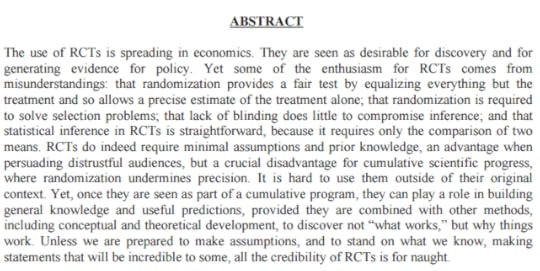Duncan Green's Blog, page 133
October 10, 2016
Ebola: How a People’s Science Helped End an Epidemic
Guest book review from Anita Makri, an editor and writer going freelance after 5+ years with SciDev.Net. (@anita_makri)
I’m sure that to readers of this blog the Ebola epidemic that devastated West Africa a couple of years ago needs no introduction (just in case, here’s a nice summary by the Guardian’s health editor). So I’ll cut to the chase, and to a narrative that at the time was bubbling underneath more familiar debates about responding to health crises – you know, things like imperfect governance, fragile health systems, drug shortages.
All of them important, but this narrative was new. It was about fear, communication and cooperation – the human and social side of the crisis (explored in a SciDev.Net collection I commissioned at the time). There was also an unsettling undercurrent to it – one that conveyed ‘otherness’ and ignorance on the part of West Africans, fuelled by reports of violence against health workers and of communities resisting expert advice against risky funeral rites.
 But if you listened closely, you could just about make out the voices of anthropologists trying to dispel notions that these reactions were about exotic or traditional cultures. Paul Richards was one of those voices, and luckily he’s put together a rare account of evidence, theory and experience in a book that should trigger real reflection on how we can do better in handling similar crises (hint: more listening).
But if you listened closely, you could just about make out the voices of anthropologists trying to dispel notions that these reactions were about exotic or traditional cultures. Paul Richards was one of those voices, and luckily he’s put together a rare account of evidence, theory and experience in a book that should trigger real reflection on how we can do better in handling similar crises (hint: more listening).
Ebola: How a People’s Science Helped End an Epidemic tells the story of the epidemic through the eyes of someone with intimate knowledge of the region and the rules that influence human interactions – very much an anthropologist’s perspective, not an epidemiologist’s. The book turns the mainstream discourse on its head, putting what Richards calls “people’s science” on an equal footing with the more orthodox science behind the international response. It captures how people and experts adapted to each other, falling into a process of knowledge co-production.
It’s something of a meandering read – you won’t be guided through the argument very neatly. But the narrative gems and fascinating anthropological insights more than make up for that. Chapter 4 had me at the first sentence: “This chapter offers an empirical analysis of the Ebola epidemic from the perspective of techniques of the body”. You’ll get a metaphor involving “necromantic joyriding” in the chapter on burial technique, plus the occasional random observation (“the smartphone without contacts is not a phone”).
The structure comes in broad brushstrokes. After an introduction to the epidemic that leads to discussion of social knowledge, the book comes into its own as Richards begins to delve into culture, body washing techniques and the ritual of burial. He takes us through the sociocultural backstreets of the epidemic – different meanings of culture, how ethnic-linguistic affiliation relates to burial practices, the gap between social and medical norms, and the empirical evidence behind his main argument for local understanding and for co-production of knowledge between responders and communities.
The evidence he cites comes from focus groups, conversations, studies and journalistic or other articles. It’s a book rich in practical examples from extensive knowledge of the region, with theory to underpin observation.
It documents self-directed changes in people’s behaviour – using rehydration and improvising by using plastic bags  when caring for sick relatives at home, for instance, changing burial rituals or restricting movement in affected areas. Richards shows how communities understood the disease in practical terms not communicated by official channels. One example is evidence that people grasped the risk involved in carrying vomiting patients for miles in a hammock – a common mode of transport in the region’s remote areas.
when caring for sick relatives at home, for instance, changing burial rituals or restricting movement in affected areas. Richards shows how communities understood the disease in practical terms not communicated by official channels. One example is evidence that people grasped the risk involved in carrying vomiting patients for miles in a hammock – a common mode of transport in the region’s remote areas.
Towards the end he recounts how a chiefdom in Sierra Leone put together a task force to do epidemiological work like tracing the contacts of sick people. This, he says, reduced the number of disease cases before the international response was ramped up. Examples like this are key to his argument, though a bit short on the detail about what communities actually did and how.
At chapter 6 it all crystallizes into Richards’ main thesis: that local people learned about Ebola quickly based on their own empirical evidence (not the same as cultural knowledge, he says – a distinction that needs more explanation); and that the changes they devised managed to change the course of the epidemic.
Another message: that the international response suffered from limitations and flawed perceptions. Here’s a good line on that: “a contradiction between home nursing and no home nursing exists only in the straight-line space of a bullet-pointed official release”. And an example: models of how Ebola moves just don’t capture the network-like features of social relationships, like extended family – their main variable is residential proximity.
All leading to the point that Ebola epidemiology isn’t an exact science or only a medical science; it is also a social science. And this, to me, begs a conversation about how to adapt the response system so it can make better use of knowledge beyond traditional epidemiology; including what NGOs can bring to the table.
 Ultimately the two sides of the response converged, Richards argues, with villagers thinking like epidemiologists and responders thinking like villagers – for instance offering simple messages around practicalities of home care, like using coconut water where rehydration fluid wasn’t available. This “merged understanding” was crucial to controlling the epidemic, he concludes. Co-production of knowledge and co-evolution of response should be supported through institutional mechanisms.
Ultimately the two sides of the response converged, Richards argues, with villagers thinking like epidemiologists and responders thinking like villagers – for instance offering simple messages around practicalities of home care, like using coconut water where rehydration fluid wasn’t available. This “merged understanding” was crucial to controlling the epidemic, he concludes. Co-production of knowledge and co-evolution of response should be supported through institutional mechanisms.
And that’s where Richards leaves it – the floor is ours. There are a few questions in the air. On the point of co-production, how do you institutionalise it? How do you address the tension between time needed for knowledge to co-evolve and the political pressures of responding quickly? More broadly, how generalisable are Richards’ observations beyond this epidemic? And, from a practical standpoint, how realistic is it to grasp nuanced anthropological understanding in real time?
I’m hoping for some ideas and conversation in response to this fascinating book.

October 9, 2016
Links I Liked
10 countries which account for 2.5% of global GDP host 56% of the world’s 21 million refugees. So what are the rich countries complaining about?
countries complaining about?
Four myths about mental health in development. ODI’s Jessica Mackenzie points out a massive gap in standard thinking on aid and development
So post Brexit, what can a mid-rank Northern govt like UK actually do to support devt? 12 smart suggestions from Owen Barder
Depressing if true. Evangelical Protestants & Catholics galvanized the ‘No’ campaign against peace in Colombia, because they didn’t like the agreement’s language on gender equity. Article in Spanish
Exfam colleague, friend and all-round star  Kate Raworth sends off hereagerly anticipated book goes off to the publishers. Doughnut Economics will be published next Spring and will definitely make waves
Kate Raworth sends off hereagerly anticipated book goes off to the publishers. Doughnut Economics will be published next Spring and will definitely make waves
Globally, children have twice the poverty rate of adults (19.5% vs 9.2% in 2013). New UNICEF/World Bank report
The US election is inescapable:
A body blow to Dilbert fans everywhere. Dilbert creator Scott Adams endorses Trump because ‘Clinton proposed raising estate taxes. I view it as robbery by government. = robbery by government’. Sigh.
‘I have the best data’. If Donald Trump published an academic article. Somehow missed this first time around. Priceless and almost nostalgia-enducing after the venom and nastiness of last night’s debate. h/t Martin Walsh
What do Africans think? Excellent. 2 minute video from Afrobarometer summarizing the results of its polls of citizens across Africa. Very thought provoking

October 6, 2016
Ten Quick Ways to generate a Blog Post
I’m running a ‘blogging for beginners’ session at LSE today, so thought I’d post this to coincide.
Whenever I try and get evangelical about blogging, the anguished cry goes up ‘where do I find the time?!’ I admit I’m spoilt – blogging takes up 30-40% of my 4 days a week at Oxfam. But at five posts a week, that still only works out at 2 hours or so per post, including responding to comments and offers of guest posts, uploading, searching for pics and cartoons etc etc, so even for lucky old me, time is at a premium.
spoilt – blogging takes up 30-40% of my 4 days a week at Oxfam. But at five posts a week, that still only works out at 2 hours or so per post, including responding to comments and offers of guest posts, uploading, searching for pics and cartoons etc etc, so even for lucky old me, time is at a premium.
Some posts take a lot longer than 2 hours, and so they should – book reviews, or a piece of new thinking that involves a lot of discussion and emails zipping to and fro with colleagues and gurus on any given issue. Which means that some need to come in at an hour or less. Here are 10 kinds of post that qualify:
So don’t start with a blank sheet of paper, where writing a blog is just a separate task on top of your existing workload. Blogging about something you were doing/saying/writing anyway is both what a
blog should be (a ‘weblog’ or diary) and a source of authentic, quick posts
Powerpoints as blogs: A good powerpoint makes a few good points, with a nice clear narrative flow. i.e. much the same as a blog. So if you’ve made the effort to produce a presentation, make sure you turn it into a blog (and upload the slides for anyone who wants to borrow from them). Recent example on barriers to NGOs and academics working together (OK, not a powerpoint, but a panel contribution)
Interesting conversations and arguments: this can feel slightly manipulative (like those columnists who write about their families), but I often turn conversations and arguments into blogposts. Again, a good conversation compares different angles on an issue, and may reach a conclusion (but if you’re blogging, you can just go with your version of the argument!). Recent example: beer and tacos with Samir Doshi.
Putting up draft papers/chapters with a summary and request for comments: I’m constantly impressed by the way a blog can generate useful commentary on work in progress. The only downside is the ever-lengthening acknowledgement sections in my papers. Recent example: theories of change in fragile settings.
Links I Liked: my daily twitter feed doubles as a post per week of twitter highlights, usually pretty popular, especially if I keep it light. Most recent example.
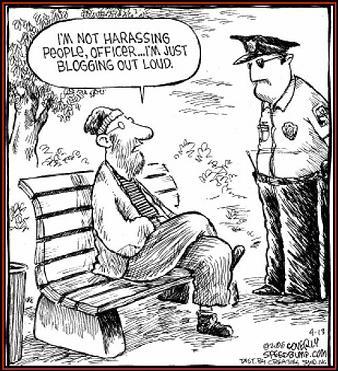 As for more time consuming and original stuff, there are still some short cuts
As for more time consuming and original stuff, there are still some short cuts
Sum, link and spin: Read something interesting? Either summarize or find a quote that captures what it was that interested you, link to the paper, and then give your opinion on why it’s important, what excited you and/or what is missing. Recent example: the World Bank’s draft World Development Report on governance and law.
Field trips: if your job entails ‘field trips’ to interesting places, these often resemble rolling seminars, generating any number of bloggable thoughts and conversations. My recent Myanmar produced 3.5 posts, which is probably about average for a 10 day trip. These take more than an hour, but are a great way to process what you are seeing. Recent example: social accountability in Myanmar
Chatham House Rules are your friend. Any meeting held under the Rule is great blog fodder – you can’t attribute anything said by name or institution, so no need to check quotes, and you can take credit for everyone else’s smart ideas. Not so recent example on Payment by Results.
Guests: you’d think that guest bloggers would save you a lot of time, but it really depends on the blogger and your standards. My record to date is 10 drafts of a single post before I was willing to publish (naming no names…..). You can avoid grief by briefing in advance on what you’re looking for (here is my standard guidance-to-fp2p-guest-bloggers) and/or asking people to run bullet points by you rather than just send over 1000 words of incomprehensible development speak. Recent Example: Max Lawson on the World Bank and Inequality.
Then of course, there’s always vlogging. 90 seconds on your phone and Bob’s Your Uncle – definitely the highest speed way to feed the blog beast. Recent example from Myanmar
Any other candidates?

October 5, 2016
Should we focus more on Women’s Political Empowerment when Democracy goes off the Rails? Tom Carothers thinks so.
My inbox has been buzzing with praise for a new paper on this issue by the Carnegie Endowment’s democracy  guru, Thomas Carothers
. Since he’s one of my favourite FP2P guest posters (no editing ever required), I asked him to summarize its findings.
guru, Thomas Carothers
. Since he’s one of my favourite FP2P guest posters (no editing ever required), I asked him to summarize its findings.
Last year the gender, women, and democracy team at the National Democratic Institute approached me with a question. NDI, like many groups engaged in supporting democracy internationally, was responding to the increasingly fraught landscape of global democracy by attempting to think more strategically and move fully away from any lingering tendency to pursue a standard democracy “menu” across extremely diverse political contexts. NDI’s gender team wanted to insert women’s political empowerment programming into the new strategic discussion. Would I help them think it through? The team deflected my protests that I lack expertise on women’s empowerment, telling me they would help me get up to speed. They also politely pointed out that as someone who presents himself as a general expert on democratic change, perhaps it was time for me to correct my lack of knowledge about the gender domain. I signed on.
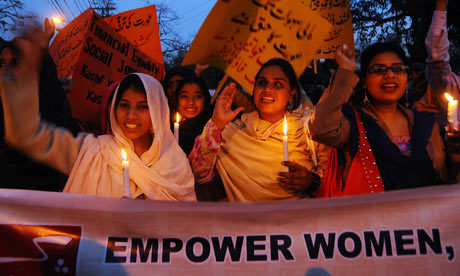
Pakistan
After some months of delving into the literature on women’s political empowerment and interviewing numerous aid practitioners and women’s activists working on the front lines, some interesting findings came into focus. I present them in my new paper, “Democracy Support Strategies: Leading with Women’s Political Empowerment.”
At first glance, programs seeking to foster greater women’s political empowerment did seem to follow a standard menu –everywhere I looked I saw training for women candidates in local and national elections, efforts to strengthen the role of women within political parties, advocacy in favor of gender quotas in legislatures, and support for women’s parliamentary caucuses. Yet when I probed how such programming unfolds across different transitional contexts, important variations emerged. I focused on three alternative contexts distinct from the assumed standard democratization path (in which the dictator falls, foundational elections take place, and democracy steadily takes root):
Stuck transitions, marked by significant blockage among the major political actors and growing citizen alienation from politics;
Semi-authoritarian systems, characterized by shrewd balancing by power holders between allowing enough
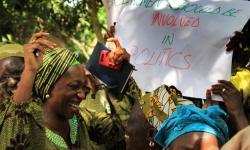
Nigeria
political space to gain credibility and maintaining enough constraints on political life to head off threats to their power; and
Conflict-affected transitions, where conflict erupts in the course of an attempted democratic transition.
I learned that in stuck transitions, women’s political empowerment work can address two critical issues that lie at the heart of what keeps such transitions from moving forward: polarization and inadequate representation. Multiparty women’s caucuses, for example, can provide a bridge across the partisan divide. The ability of women politicians to connect to grassroots networks of women civic and social activists can serve as a start for building a more representative politics.
I found that, at least in some semi-authoritarian contexts, strengthening the capacity of women parliamentarians or women local council members can help bolster the few sources of independent political authority that exist. Power holders determined to screen out foreign political assistance often let in women’s political programming, lulled by the false belief that it always remains at the political margins. For example, years of patient work on women’s political empowerment in Burkina Faso went on in an environment of growing political thuggishness, but paid off in  2014 when women were at the forefront of protests that helped crack open the system.
2014 when women were at the forefront of protests that helped crack open the system.
In conflict-affected countries, significant opportunities arise for women to play a key role in the negotiation of new constitutions, the brokering of peace, and the reform of security services after peace is restored.
The point is not just that women’s political empowerment work can be usefully tailored to different political contexts. It is that a focus on women’s political empowerment often connects directly to the central levers of political change that democracy aid providers believe could help countries with problematic transitions get back on a democratic track. In other words, women’s political empowerment work should not be seen as an isolated aid sector or a nice extra at the sides of the assistance stage. Properly understood, it can and should be part of the core agenda for responding to challenging democratic transitions.
Interestingly, some of the expert practitioners I consulted were hesitant about formulating focused strategic arguments for women’s political empowerment work in particular contexts. They felt that aid providers shouldn’t need anything more than a basic overarching rationale for pursuing such work—the argument that no democracy is a full democracy when significant gender inequalities exist in politics. In this view, women’s political empowerment work should be pursued wherever gender inequalities exist (which is to say, pretty much everywhere outside of a few very cold countries). While I agree with the basic principle of such a rationale, I believe that in this era of tough competition among multiple aid priorities and the relentless search for value for money, fortifying the case for women’s political empowerment with focused strategic arguments is a worthwhile pursuit.

October 4, 2016
Beer and Tacos with Samir Doshi from USAID
Had a fun dinner in Brixton market last week with Samir Doshi, a Senior Scientist at USAID’s U.S. Global  Development Lab, which describes itself as “an innovation hub that takes smart risks to test new ideas and partner within the Agency and with other actors to harness the power of innovative tools and approaches that accelerate development impact.” This appears to be a novel way to get into the sandpit and do all sorts of really interesting things on adaptive management and technology and ‘doing development differently’. He’s also helping to co-organize a Sida DDD event today, which sounds like it’s going to have quite a turnout. Some highlights from the conversation:
Development Lab, which describes itself as “an innovation hub that takes smart risks to test new ideas and partner within the Agency and with other actors to harness the power of innovative tools and approaches that accelerate development impact.” This appears to be a novel way to get into the sandpit and do all sorts of really interesting things on adaptive management and technology and ‘doing development differently’. He’s also helping to co-organize a Sida DDD event today, which sounds like it’s going to have quite a turnout. Some highlights from the conversation:
With the ever increasing tidal wave of data being churned out and hopefully becoming available for transparency/accountability purposes, there is a lot of discussion on using this for Big Data crunching. That tends to be all about philosopher geeks crunching numbers in some trendy Silicon Valley office, but Samir feels that it’s also about connecting big data with small data – generating information and analyses that is usable at a local and  household level to provide new insights that can spur community driven development, using technology as a means to connect with those that don’t have a voice.
household level to provide new insights that can spur community driven development, using technology as a means to connect with those that don’t have a voice.
USAID is getting v excited about ‘Adaptive Management’, working closely with its program on Collaboration, Learning and Adaptation. Looking at other industries such as IT, finance, and even military counterinsurgency strategies, Samir and colleagues are exploring how real-time data can help us improve a ‘probe-test-response’ cycle with tight feedback loops and “small bet” experiments in a PDIA-like approach.
They’re also thinking about how we can improve the current Adaptive Management narrative, which is more or less that an intervention is under way, then something goes wrong or is dropped, and we adapt to try and keep things on track. But Samir reckons what we really need is ‘Evolutionary Management,’ which continually changes the outcomes of delivery as well as how we do it. The interesting thing is that you can use the same data you would use for AM tweaking to do some much deeper EM rethinking. But this needs we need good data that we use not as a tactical monitoring/tweaking tool, but as an enabler of strategic dialogue. Stay tuned for more articles and blogs on the real-time data for adaptive management work coming from USAID and the research team of IDS, ODI, Feedback Labs and Reboot.
Samir thinks that one of the flaws in the current aid and development set up is that it doesn’t really do R&D 
(Research and Development). R&D combined are agile: you get some insights through research, put them into practice, then work back from the results to sharpen thinking through further research, then back into practice – e.g., in software, finance, pharma or even gene tech. He says that generally in development, “We either do R or we do D and the two are not usually connected in the same program.” While not taking the conventional industry approach to R&D, the Lab is working to strengthen join the two through locally-driven R&D projects with real-life results on the ground. Programmes like the Higher Education Solutions Network (HESN) and Partnership for Enhanced Engagement in Research (PEER) engage a range of diverse partners in solving development challenges and supporting locally-driven research. DFID and other donors seem to be going down a similar track. What other examples are out there?
What I liked about Samir’s shtick is USAID’s focus on practical relevance. The Lab has set up something called the Practical Adaptation Network with Feedback Labs – take a look if you want to see their approach, including ‘sprint  teams’ to ‘committed to producing a tangible deliverable within 100 days that moves us closer to adaptive, agile and inclusive practices in development’. What, no multi-year lit reviews, evidence papers and concept notes?
teams’ to ‘committed to producing a tangible deliverable within 100 days that moves us closer to adaptive, agile and inclusive practices in development’. What, no multi-year lit reviews, evidence papers and concept notes?
All this is in marked contrast to conventional NGO views of ‘the donors’ – jobsworth stick in the muds insisting on their logframes and KPIs, intent on blocking our attempts at innovation. I fear the boot may be on the other foot – we need to find innovators like Samir in the donor agencies, and work with them to overcome the forces of inertia both in the aid donors, and the NGOs.
I’m off to Washington in November to flog the book (what else), and have some time scheduled with Samir and USAID colleagues – really looking forward to it. But I also want to sit Samir down and get his life story – anyone who mentions, in passing, that he spent 6 months living in a cave, doing the Dalai Lama’s washing up (and another three years in a tent) has to warrant a blog all of his own.

October 3, 2016
Talk is cheap, but will the World Bank really step up on inequality?
Max Lawson, Oxfam’s
Head of Development Finance and Public Services
raises the curtain this week’s World Bank and IMF Annual Meetings before hopping on the plane to Washington
and IMF Annual Meetings before hopping on the plane to Washington
I have been going to the Annual Meetings of the World Bank and IMF longer than I care to remember, certainly since most Oxfam policy wonks were still at school. Every time I go to the office I feel old these days. Age does have some small benefit though. It enables me to see just how far things have changed in the way the IMF and Bank are talking about extremely high levels of inequality across the world – more than I would ever have thought possible (both the talk and the inequality, unfortunately).
The inequality crisis is high on the official agenda this week. The World Bank has just launched its first major report on inequality in a decade. The report focuses on the World Bank’s aim to ensure ‘Shared Prosperity’ by boosting the share of national income going to the bottom 40% of the population. Two cheers, maybe two and a half – it moves the Bank beyond banging on about aggregate growth and starts looking at who benefits, but I wouldn’t be working for an NGO if I didn’t want more. Here’s my pitch
 The problem with Shared Prosperity as a measure of inequality is that it doesn’t actually measure inequality. By making no reference to the growth in incomes at the top of society, it fails to capture what is happening to the gap between rich and poor. That might be as much as the countries who make up the World Bank board would accept but it’s distinctly underwhelming.
The problem with Shared Prosperity as a measure of inequality is that it doesn’t actually measure inequality. By making no reference to the growth in incomes at the top of society, it fails to capture what is happening to the gap between rich and poor. That might be as much as the countries who make up the World Bank board would accept but it’s distinctly underwhelming.
Quite a few of the World Bank staff seem to agree, because this year they have added to the report a really great substantive additional section on inequality. This is great, and it would be greater still if they were to do this every year.
This year’s report looks at the Palma measure for example, which compares the bottom 40% with the incomes of the top 10%. It may sound like a debate among geeks, but it would be far preferable to the Shared Prosperity goal, because it actually addresses the gap between rich and poor, i.e inequality, rather than the half way house of Shared Prosperity.
The report also shows how data systematically underestimates the scale of inequality and the incomes of those at the top, especially in developing countries. Nevertheless, this has not stopped them drawing very categorical and upbeat conclusions about many countries reducing inequality in recent years. Genuine stories of success are vital to understanding what can be done to tackle inequality. But we should I think remain a little more circumspect than the Bank does, given the evidence that the data is wrong or missing. Where we do have data on top incomes the picture is of worsening inequality. The top 1% in the US have secured over half of all income growth since the financial crisis. The incomes of the top 1% in Brazil grew rapidly during the same period that official inequality was falling. If the bank is serious about tackling inequality they should surely avoid painting an overly rosy picture which sends the opposite message.
Bank does, given the evidence that the data is wrong or missing. Where we do have data on top incomes the picture is of worsening inequality. The top 1% in the US have secured over half of all income growth since the financial crisis. The incomes of the top 1% in Brazil grew rapidly during the same period that official inequality was falling. If the bank is serious about tackling inequality they should surely avoid painting an overly rosy picture which sends the opposite message.
The report also briefly discusses inequality of wealth. which is far more extreme than inequality of income. The top 1% now own more globally than everyone else put together, following rapid increases in recent years. Disappointingly this is not looked at across countries or in any depth.
Most importantly, the report concludes categorically that the world will not be able to eliminate poverty without redoubling efforts to tackle inequality, a conclusion Oxfam would strongly support.
The report is weakest when it attempts to lay out the ‘so whats’ – the policies needed to combat inequality. World Bank President Jim Kim is right when he rejects the ‘trickle down economics’ that has done so little to tackle inequality over the last 30 years, but this report doesn’t really rise to the challenge of what to do instead.
 Its policy proposals feel far more like a justification of what the Bank is doing already. Of course many Bank activities help fight inequality, whether it is rural roads or early childhood development. But many others – like supporting so called “low fee private schools” would struggle to pass an ‘inequality audit’. The Bank needs to walk the talk.
Its policy proposals feel far more like a justification of what the Bank is doing already. Of course many Bank activities help fight inequality, whether it is rural roads or early childhood development. But many others – like supporting so called “low fee private schools” would struggle to pass an ‘inequality audit’. The Bank needs to walk the talk.
The private sector arm of the World Bank, the International Finance Corporation, is perhaps the most egregious example of this gap between words and deeds. The IFC has been complicit in murderous land grabbing, continues to actively use tax havens, is promoting failed public private partnerships in Health, Education and Agriculture, and despite great rhetoric on climate, new reports released this week show the institution is linked to several coal projects in Asia and serious human rights abuses through its investments in financial intermediaries.
Over the street, the IMF has been significantly more ambitious, concluding that inequality is bad for growth, that redistribution needn’t harm growth, that we need more trade unions and perhaps most important of all that neoliberalism has increased inequality. This is all pretty disorientating for someone like me, who cut their advocacy teeth during 1990s, when the IMF was trying to impose disastrous ‘structural adjustment’ around the developing world.
But the IMF is just as guilty of a gulf between these revolutionary conclusions and continued business as usual. Last 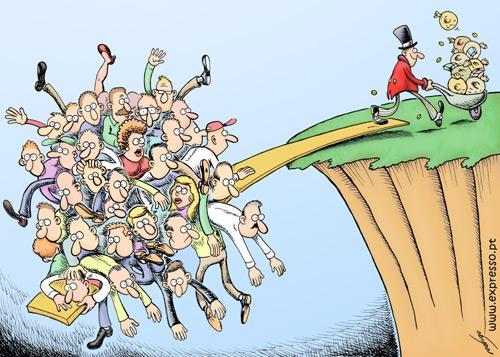 week the Financial Times highlighted the brutal austerity being required of Egypt to secure IMF support and how it will hurt the 30 million Egyptians living in poverty. That’s the Fund I remember.
week the Financial Times highlighted the brutal austerity being required of Egypt to secure IMF support and how it will hurt the 30 million Egyptians living in poverty. That’s the Fund I remember.
President Kim’s re-coronation as World Bank President for a second term has just been announced. This has been greeted with criticism from across the political spectrum, and is happening against the backdrop of unrest amongst World Bank staff. Those of us with longish memories remember how staff bravely succeeded in seeing former World Bank President Paul Wolfowitz removed, so they are a force to be reckoned with.
All the more reason for President Kim to shore up his credibility by demanding a truly proactive agenda on fighting inequality. Here’s Oxfam’s wishlist:
A low hanging fruit would be a serious investment in improving the appalling quality of data on inequality across the world. Working with the IMF, UN and others like the Gates Foundation they could lead a data revolution in this area, including income and wealth at the top, vital to understanding the nature of inequality and how to deal with it.
Inequality audits of all Bank policies and lending.
The Bank could set up a dedicated unit to assist countries in removing user fees for health, which kill people and fuel inequality. President Kim has said he opposes these fees, yet they persist in country after country and the World Bank needs to do more to address this. This would be a great start to his new term.
He can drop controversial World Bank support for private education too while he is at it, as this too drives up inequality and excludes the poorest, especially girls, as the forthcoming report from the Global Campaign for Education demonstrates.
They could have a team dedicated to tax evasion and avoidance, working with the IMF and country authorities to ensure rich individuals and corporations pay their share, and they could make sure they themselves are safeguarding against irresponsible taxation by their corporate clients.
What is clear is that the World Bank and IMF can play a critical role in combatting inequality- but it is time to move from simply saying the right thing to doing it too.

October 2, 2016
Links I Liked
Angus Deaton and Nancy Cartwright with a new paper on the pros and cons of RCTs.Check out the abstract if you need convincing.
More sweatshops for Africa? Chris Blattman reports on a 6 year randomized control trial (RCT) to look at the impact of low wage manufacturing on poor Ethiopians, and (as they say in clickbait college) his answers may surprise you
Is a rising middle class really the best guarantee of good governance in emerging economies? The always readable Sina Odugbemi disagrees with Nancy Birdsall
DfID in the spotlight
DfID ‘should have done more’ to give poor countries a voice on fixing tax evasion. ICAI, the official UK aid watchdog is getting interesting
On the other hand, after 400 investigations, which found 69 positive cases the , cost of detected fraud in DFID’s spend was £1.04m in 2015-16. That’s just 0.01% of the total, (and presumably conducting 400 investigations to arrive at that number cost a lot more than £1m). Which raises the intriguing (for wonks anyway) question, how would you measure the value for money of anti-corruption investigations?
Oxfam GB’s new policy & campaigns director, Matthew Spencer, has just arrived from Green Alliance. Here’s his parting thoughts on 6 years of environmental campaigning in the UK
Hard to escape the US presidential campaign, but let’s at least avoid raking over last week’s debate:
Tired of Trump? Cool on Clinton? For a deeply weird/face slap candidate, time to follow Gary Johnson
Unable to name a single foreign leader (only in America? Don’t be so sure)
And here he manages to make Trump look positively normal [h/t Gawain Kripke]
Smart video trying to get US millennials to vote (why didn’t we have one of these on Brexit?!). Manages to combine lots of famous peeps being knowing/ironic, while still the message across
And the satirists are stepping up to their admittedly not very difficult task. Alec Baldwin’s Donald Trump is mesmerizing – on a par with Tina Fey’s Sarah Palin. 10m of sheer joy.

September 29, 2016
What does ‘pure research’ on international development look like? Speed-dating at the LSE
Following on from yesterday’s musings about NGO-academic collaboration (or the lack of it), here, for my NGO  colleagues is a taste of what my LSE colleagues get up to, published earlier this week on the LSE International Development blog
colleagues is a taste of what my LSE colleagues get up to, published earlier this week on the LSE International Development blog
Speed dating rocks. Don’t worry, this isn’t going to get icky. I’m talking about a session at LSE’s International Development Department where each researcher was given 3 minutes to pick out a big idea from their research, policed by a very insistent buzzer. It was a fantastic tour d’horizon, as well as very funny watching some of our more verbose colleagues barely get past their introductory remarks before the guillotine came down (metaphorically).
There were too many contributions for one blogpost, but here is a sample of some of the ones that stood out.
 Naila Kabeer using the stories of men and women from a village she has been visiting since 1979 to try and develop a ‘grounded theory’ for why Bangladesh is such a positive outlier in terms of social progress and women’s rights (e.g. there is not a skewed sex ratio, unlike India)
Naila Kabeer using the stories of men and women from a village she has been visiting since 1979 to try and develop a ‘grounded theory’ for why Bangladesh is such a positive outlier in terms of social progress and women’s rights (e.g. there is not a skewed sex ratio, unlike India)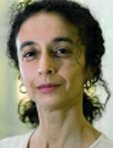
Shirin Madon is trying to work out how India’s new biometric identity card system (Aadhar) is affecting local government’s ability to improve its capacity for planning in key application areas such as public distribution and fertiliser subsidy
 Kathy Hochstetler is asking whether wind and solar power in South Africa and Brazil make for a good industrial policy. OK they make sense from an environmental point of view, but do they really create enough jobs and generate the vested interests required to take them to scale?
Kathy Hochstetler is asking whether wind and solar power in South Africa and Brazil make for a good industrial policy. OK they make sense from an environmental point of view, but do they really create enough jobs and generate the vested interests required to take them to scale?
Joana Naritomi is working with the state government of Amazonas in Brazil to see if the new emphasis on getting  value for money by improving competition in public procurement of food, medicines etc is actually leading to officials having to accept the cheapest tender, even if it comes with lower quality.
value for money by improving competition in public procurement of food, medicines etc is actually leading to officials having to accept the cheapest tender, even if it comes with lower quality.
 David Keen is looking at ‘policy panics’ born of systems failures on issues such as terrorism and migration, and asking who benefits from the associated cloud of shame and blame
David Keen is looking at ‘policy panics’ born of systems failures on issues such as terrorism and migration, and asking who benefits from the associated cloud of shame and blame
James Putzel is looking at cooperative rural land ownership in China, contrasting the history of successful  land reforms in eg Japan and South Korea, which resulted in limiting land markets (eg ceilings on land ownership, restrictions on sales), with recent advice from the World Bank advocating markets as solution (eg individual land rights). He has found evidence in China that the rural poor benefit from cooperative land rights and the challenge is to democratise cooperatives rather than to privatise landownership.
land reforms in eg Japan and South Korea, which resulted in limiting land markets (eg ceilings on land ownership, restrictions on sales), with recent advice from the World Bank advocating markets as solution (eg individual land rights). He has found evidence in China that the rural poor benefit from cooperative land rights and the challenge is to democratise cooperatives rather than to privatise landownership.
 Tim Dyson has a powder keg of a research project arguing that Amartya Sen’s famous analysis of the 1943/4 Bengal famine was profoundly wrong on both causes and consequences. Among other things, much of the demographic data used by Sen are seriously flawed because they were crudely reconstituted from registration statistics by people working in the West Bengal census office in the late 1940s, a fact which compromises their integrity
Tim Dyson has a powder keg of a research project arguing that Amartya Sen’s famous analysis of the 1943/4 Bengal famine was profoundly wrong on both causes and consequences. Among other things, much of the demographic data used by Sen are seriously flawed because they were crudely reconstituted from registration statistics by people working in the West Bengal census office in the late 1940s, a fact which compromises their integrity
Anna Macdonald is looking at the role of magistrates’ courts in Northern Uganda, where she finds that local people  actually prefer the lack of ‘due process’ that aid agencies typically moan about. Lack of due process means lots of time, bail payments, and periods in prison before trial that are often used as a form of punishment/revenge. Big implications for access to justice work.
actually prefer the lack of ‘due process’ that aid agencies typically moan about. Lack of due process means lots of time, bail payments, and periods in prison before trial that are often used as a form of punishment/revenge. Big implications for access to justice work.
 Geoff Goodwin finds that as the state withdrew under structural adjustment, community water management organizations in Ecuador emerged into the space, but are now facing a resurgent state.
Geoff Goodwin finds that as the state withdrew under structural adjustment, community water management organizations in Ecuador emerged into the space, but are now facing a resurgent state.
Pritish Behuria finds African governments (Rwanda) reintroducing industrial policy and import substitution under the new euphemism of ‘domestic market recapture’, for example by banning second hand clothes imports.
under the new euphemism of ‘domestic market recapture’, for example by banning second hand clothes imports.
 Aico Nogueira from Brazil is pondering the contradiction that the Worker’s Party government institutionalized Brazil’s landless movement (the MST), after which the country made precisely zero progress on land reform
Aico Nogueira from Brazil is pondering the contradiction that the Worker’s Party government institutionalized Brazil’s landless movement (the MST), after which the country made precisely zero progress on land reform
Benjamin Chemouni is also looking at Rwanda, trying to identify the role of ideas and ideology in shaping the actions of Paul Kagame’s ruling RPF. To try and separate them from the vested interests that have come with power, he is analysing the lyrics of songs of the liberation struggle (i.e. before taking power) in terms of ethnicity, forgiveness etc. How cool is that?
of Paul Kagame’s ruling RPF. To try and separate them from the vested interests that have come with power, he is analysing the lyrics of songs of the liberation struggle (i.e. before taking power) in terms of ethnicity, forgiveness etc. How cool is that?
And of course, I banged on about How Change Happens, which I’m launching with Naila Kabeer at the LSE on 1 November.
There were lots more, but I hope this gives you a taste for what ‘pure’ research on international development looks like. Interesting? Relevant? Weird and obscure? What do you think?

September 28, 2016
Why is it so hard for academics and NGOs to work together?
I attended the annual awayday of the LSE’s International Development Department last week (I’m on its books for a day a week as a ‘Professor in Practice’). It was actually surprisingly interesting (am I allowed to say things like that?).
I was asked to talk about how academia can do better in forging partnerships with INGOs. Its an oldie-but-goodie, and I’ve written about it before on the blog (more than once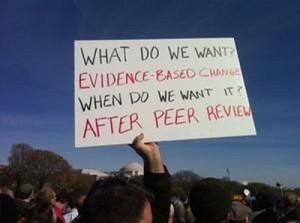 ), but I think the discussion got a bit further this time.
), but I think the discussion got a bit further this time.
First, the partnerships don’t happen nearly enough. Looking out the windows from our Thames-side meeting room, I could see that DFID, Christian Aid, CAFOD, Save the Children and the ODI were all within a mile or two, constituting a London cluster on aid and development that is both productive and resilient (and a lot of fun). Yet the awayday stayed firmly within the academic comfort zone of teaching and research, and even its discussion of partnerships largely concerned itself with other academic departments (mostly within the sprawling LSE landscape).
Yet the case for partnership with INGOs is actually very strong. INGOs bring presence on the ground (either through being operational, or having long term local partners), they bring communications skills (not always academics’ strong point). Academia contributes research smarts and credibility, and a long term, reflective lens that frenetic activism often lacks. I blogged recently on a good Interaction report on ‘How can academics and the third sector work together to influence policy and practice’ – an increasingly important demand from government when funding research.
But what dawned on me during the discussion is that if anything, INGOs and academia are too complementary – there is so little overlap between them that it is often difficult to team up. Some examples:
Timescale: INGOs’ focus is urgent, immediate and often in response to events. Academics work to a different rhythm, both in terms of the issues, and the way they respond to them. When we got some research funding with IDS to explore food price volatility, it was top of our advocacy agenda, but food prices calmed down, the campaigns spotlight moved on, and the resulting research, though really interesting, struggled to connect with the rest of Oxfam.
So Whats: INGOs are seldom interested in knowledge for its own sake. It’s a vehicle to change the world. So research that sheds light but generates little heat is not greatly valued. Even words like ‘research’ been different things to NGOs and academics (what NGOs do is often more like evidence-based narrative than primary research). Two handed academics (on the one hand; on the other) get frustrated with one handed (finger wagging) activists and vice versa. That easily tips over into mutual disrespect.
 Research is very underfunded in INGOs and is distributed across organizations. In Oxfam GB, the policy research team led by the wonderful Irene Guijt is behind all that high impact stuff on inequality for Davos, and a pile of other impressive work, but has just 8 staff. There are lots of smart researchers working elsewhere within Oxfam – on programme monitoring, evaluation, learning, or doing research as part of their advocacy roles, but it is still really hard to engage with academics, even if it’s just to make meetings to explore options – there are just so many of them (200,000 in UK universities alone, according to InterAction), and so few of us!
Research is very underfunded in INGOs and is distributed across organizations. In Oxfam GB, the policy research team led by the wonderful Irene Guijt is behind all that high impact stuff on inequality for Davos, and a pile of other impressive work, but has just 8 staff. There are lots of smart researchers working elsewhere within Oxfam – on programme monitoring, evaluation, learning, or doing research as part of their advocacy roles, but it is still really hard to engage with academics, even if it’s just to make meetings to explore options – there are just so many of them (200,000 in UK universities alone, according to InterAction), and so few of us!
What to do?
Talk to each other early on. Avoid the opposite – academics who wait til they’ve written the paper before looking for an NGO to help with their dissemination, or NGOs (or donors) who decide their policy line, then commission some academic to do policy-based evidence making.
Create research ideas together – I really like the InterAction report’s call for funding of ‘knowledge brokers’ and ‘embedded gateways’ capable of (mixed metaphor alert) bridging the divide between scholars and activists. But donors could also help by encouraging collaboration through 50/50 funding, half for action and half for research – at the moment they seem to fund one or the other, which misses the chance to foster links.
Try and reconcile the timescale problem so that, for example, PhD students can build their work around the needs  and activities of a given NGO. We had a useful experience with this when Tom Goodfellow (now at Sheffield University) helped us think through our work on urbanization while doing his PhD on the same topic, but we are seldom approached at this level.
and activities of a given NGO. We had a useful experience with this when Tom Goodfellow (now at Sheffield University) helped us think through our work on urbanization while doing his PhD on the same topic, but we are seldom approached at this level.
At the moment, contact and conversations are ad hoc and rather superficial. What would it look like to have a mutual capacity building strategy, where INGOs strengthen academics and vice versa? Ideas could include:
Reflection spaces in academia where practitioners can undergo decompression for a few weeks or months, and be helped to reflect and write up their experiences
More exchange of personnel, like my Professor in Practice role at LSE – that could go both ways. What about some Oxfam fellows, who could help guide our thinking in return for access to our work?
Unless we expand the area of overlap in the Venn Diagram between academia and INGOs, I fear the relationship will remain frustrating and unproductive.
Oh, and please note, academics, just looking at NGOs as a convenient place to dump your students doesn’t work!
Thoughts?

September 27, 2016
Once every 20 years the UN focuses on cities, but the wrong people will be there
Urbanization guru David Satterthwaite raises the curtain on next month’s big Habitat III conference.

Sadiq Khan, I presume?
Surprising though it may seem, I once got mistaken for the mayor of London. I was at a conference for mayors in Latin America and not realising the mistake, for half a day I had all the most prominent mayors greeting me like a brother and asking my advice.
It was perhaps the only time in my 40 years of working on urban issues that I could have had some influence.
At least urban issues are now being more widely recognised. As Habitat III approaches (the once-every-20-years UN event that focuses on cities, 17-20 October in Quito, Ecuador), I see fewer claims that almost all poverty is in rural areas or that cities are parasitic, for example.
The Sustainable Development Goals (SDGs) even include a goal for cities (and a very ambitious goal too – making them inclusive, safe, resilient and sustainable). On climate too, the Paris Agreement acknowledges their importance for climate change adaptation and mitigation, and the latest IPCC Assessment recognises that cities can combine good quality of life with low greenhouse gas emissions, backed by evidence of what innovative cities have achieved.
The international network of ‘disaster’ agencies got the importance of risk reduction in urban areas some years ago – see the Sendai framework for Disaster Risk Reduction. The international networks of humanitarian agencies now realize that many refugees and displaced people go to urban areas and that policies to support them need to change. And the key role of cities and urban systems in economic growth and in innovation are now recognised.
But.

Washing in Dharavi, an informal settlement in India’s financial capital Mumbai. Around the world more than 800 million urban dwellers live without water piped to their premises and an even larger number cope with poor sanitation.
(Photo: Lecercle, Creative Commons via Flickr)
The key actors in all this – urban governments, urban voters, and local civil society organisations (including those formed by the people whose needs are not met) – have very little say. If they had more influence, then 880 million urban dwellers would not still live without water piped to their premises and an even larger number would not have to cope with lousy (or no) sanitation.
Jockin Arputham, the head of India’s National Slum Dwellers Federation, remarked that when he first came to Mumbai, he had to use “air conditioned toilets” i.e. defecating in the open. Hundreds of millions still do.
Who sets the goals?
Of course international goals and commitments are made by national government representatives, even when most of the action needed (at least in urban areas) fall within the responsibilities of urban governments. But local governments never get to be part of this goal-setting.
A twitter poll set up by Accenture asked readers to vote on who was the biggest actor in delivering the SDGs (@AccentureStrat). Local government, local voters or community organisations were not even included as options. According to the poll, business is the biggest actor.
The United Nations processes that generate these goals and commitments have tried to allow civil society groups to make their recommendations. So a vast range of groups and alliances have formed to push their chosen priority, each with different needs that have to be addressed (infants, young children, migrants, refugees…) or different issues (water, sanitation, air pollution, particular diseases, urban agriculture…). They end up competing with each other for attention to their chosen priority in the commitments and goals.
What is needed is support for the local processes driven by local needs, local groups and local capabilities with the needs of those with the unmet needs the SDGs are meant to address being centre stage.
A new urban agenda?
So now we have Habitat III in October 2016. It is meant to agree on “The New Urban Agenda” to support urban governments to meet the SDGs. But the focus so far has been on repeating all the same commitments made before with very little attention on how they will be implemented.
There is a lack of focus on local government capacity and accountability (central to delivering most SDGs) and at best ‘the poor’ are seen as passive recipients. At worst they and their needs are invisible.
Yet again, national governments will make long lists of solemn commitments that they will not or even cannot meet without local government and local civil society. And this is the case even though local governments have become better organised in networks that seek to get more attention to local agendas – for instance through United Cities and Local Governments, ICLEI and C-40.
Many local governments have made their own commitments to climate change mitigation. Wouldn’t the SDGs have a lot more validity if local governments made their own commitments to addressing them, with their performance monitored by their population?
Avoiding tokenism
At least in Latin America, there are many strong examples of elected mayors and city governments showing what is possible and being accountable to their populations. Perhaps their role might one day be recognised.
And sometimes a little space is given in UN meetings for representatives from slum/shack/homeless people’s federations that have developed in over 30 nations. Once they have spoken, a box gets ticked. But this is using urban poor groups to legitimate the international agenda rather than an international agenda that legitimates the urban poor’s agenda.
David Satterthwaite is a senior fellow in IIED’s Human Settlements Group.

Duncan Green's Blog
- Duncan Green's profile
- 13 followers


